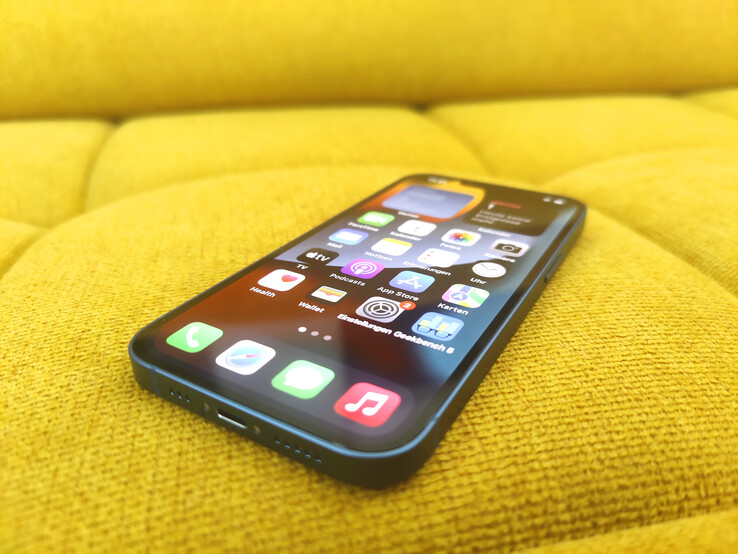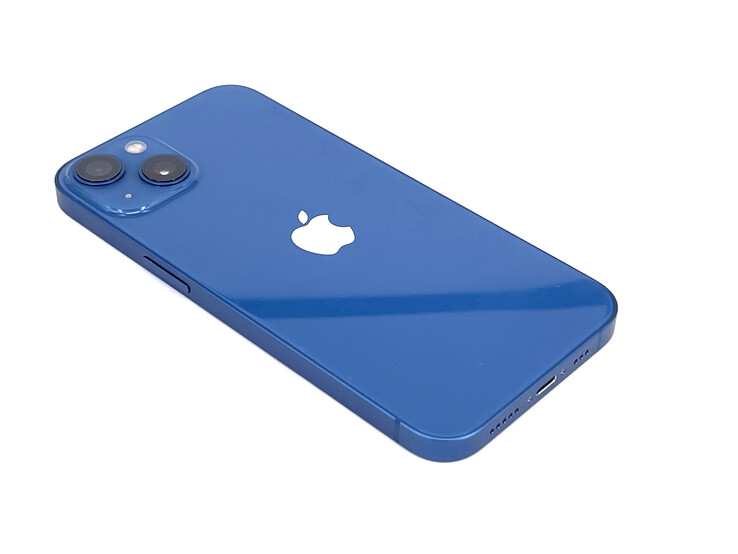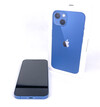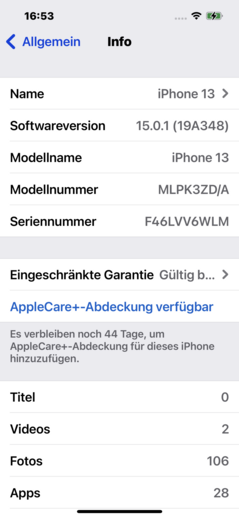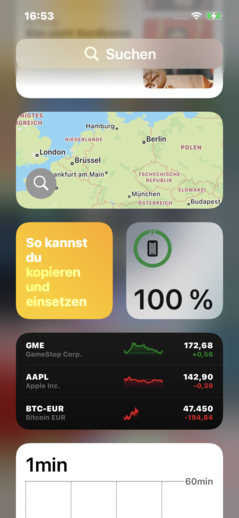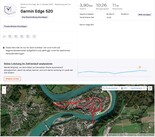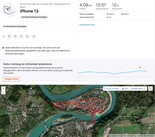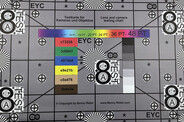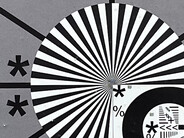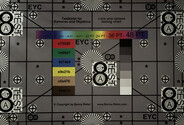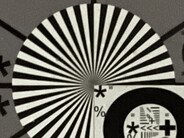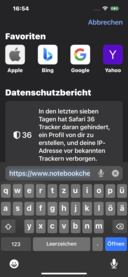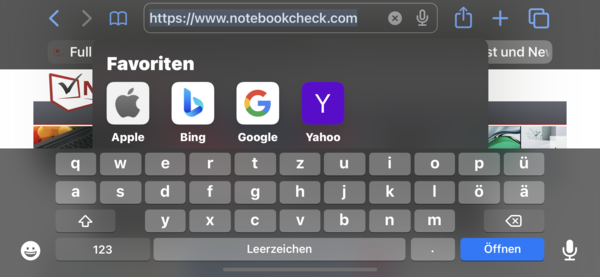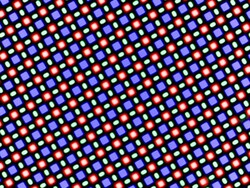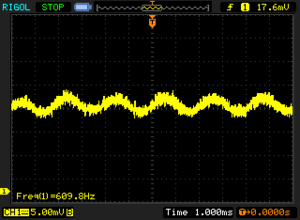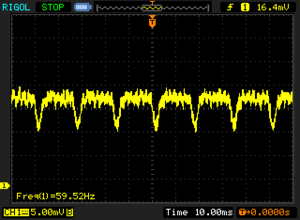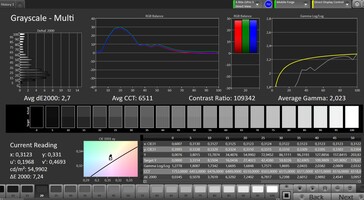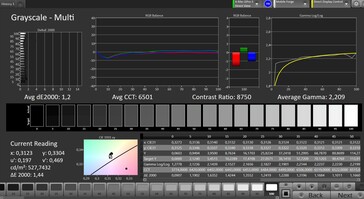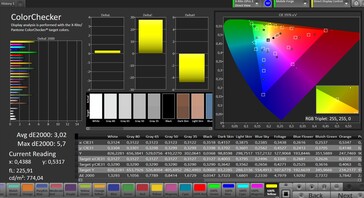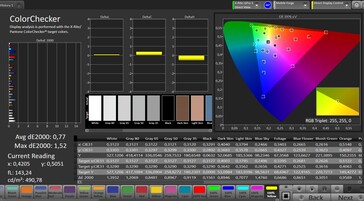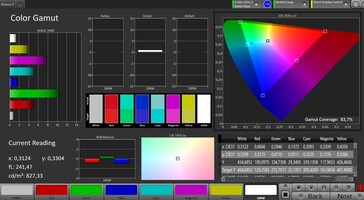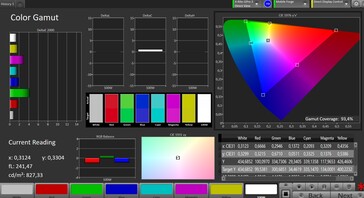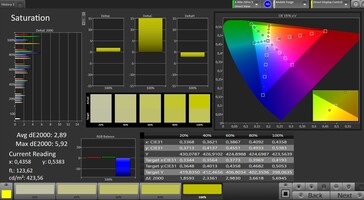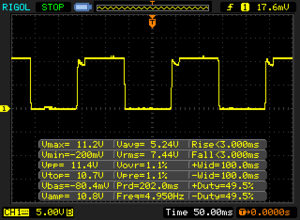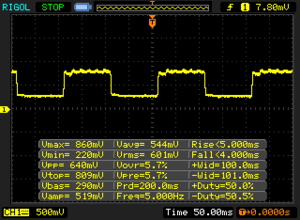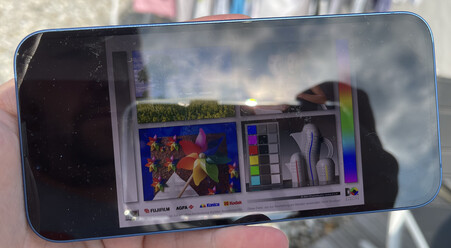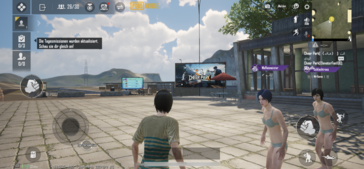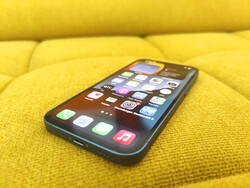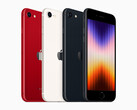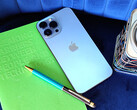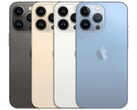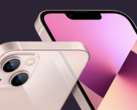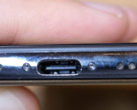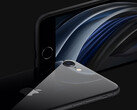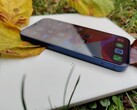Apple iPhone 13 Smartphone Review - High-quality Apple phone with an even brighter display
Luckily, Apple has improved the iPhone with its 13th generation by making small, but meaningful upgrades. On top of that, users will receive more storage for the same base price as in 2020, a new processor, and an updated iOS version.
However, the iPhone 13 once again does not come with a high refresh rate, which is exclusive to this year's "Pro" models. Similarly, there is still a large notch at the top of the screen, although it is slightly smaller compared to the predecessor's. In this in-depth review, we will determine whether this year's iPhone continues to be one of the best smartphones available.
Potential Competitors in Comparison
Rating | Date | Model | Weight | Drive | Size | Resolution | Price |
|---|---|---|---|---|---|---|---|
| 88.7 % v7 (old) | 10 / 2021 | Apple iPhone 13 A15, A15 GPU 4-Core | 173 g | 128 GB NVMe | 6.10" | 2532x1170 | |
| 88.2 % v7 (old) | 11 / 2020 | Apple iPhone 12 A14, A14 Bionic GPU | 162 g | 64 GB SSD | 6.10" | 2532x1170 | |
| 89.5 % v7 (old) | 02 / 2021 | Samsung Galaxy S21 Exynos 2100 5G, Mali-G78 MP14 | 169 g | 128 GB UFS 3.1 Flash | 6.20" | 2400x1080 | |
| 87.2 % v7 (old) | 04 / 2021 | OnePlus 9 SD 888 5G, Adreno 660 | 192 g | 256 GB UFS 3.1 Flash | 6.55" | 2400x1080 | |
| 87.3 % v7 (old) | 02 / 2021 | Xiaomi Mi 11 SD 888 5G, Adreno 660 | 196 g | 128 GB UFS 3.1 Flash | 6.81" | 3200x1440 | |
| 87.1 % v7 (old) | 10 / 2021 | Sony Xperia 5 III SD 888 5G, Adreno 660 | 168 g | 128 GB UFS 3.0 Flash | 6.10" | 2520x1080 |
Case - Yay, a Smaller Notch!
Since the iPhone 12 came with a major design overhaul for the iPhone series, the current generation features more tame changes: The iPhone 12 only differs from the iPhone 13 in small details such as the diagonal arrangement of the cameras on the back and the notch for the front camera and sensors, which is now finally smaller. That being said, it is still quite visible compared to other smartphones with a hole-punch camera or a waterdrop notch. The earpiece has been moved towards the top edge, which may be an indication of an even smaller notch or perhaps its outright disappearance in the future.
There are also only small adjustments in terms of the colors: Blue, black, white, and red is once again available with the rose color being a new option that we are already familiar with from other Apple devices.
This year's model also once again comes with IP68 water and dust protection. Furthermore, the front and back are supposedly relatively robust thanks to Ceramic Shield, Apple's ceramic glass developed in collaboration with Corning. While initial drop tests on the Internet seem to indicate that the iPhone 13 is in fact able to withstand falls from moderate heights with barely any scratches, using a case is still recommended due to the high price.
Users also will not have to make any compromises in terms of the iPhone's stability and build quality: The aluminum case achieves a premium look regardless of the color choice and the clearances are extremely tight. The center of the display only slightly yields under pressure.
Compared to its predecessor, the iPhone 13 is slightly heavier and marginally thicker.
Connectivity – More Storage for the Same Price
The new iPhone comes in three different capacities:
- Apple iPhone 13 128 GB NVMe storage: $799 USD
- Apple iPhone 13 256 GB NVMe storage: $899 USD
- Apple iPhone 13 512 GB NVMe storage: $1099 USD
Each model includes 4 GB of RAM.
While Apple has phased out its smallest, 64 GB version, the price for the (now 128 GB) base model remains unchanged. Similarly, the 256 GB model is now also cheaper compared to last year's iPhone launch. Meanwhile, the 512 GB version is a new addition to the lineup.
NFC continues to be on board to allow for payments via Apple Pay. We would like to see a more up-to-date Bluetooth version, since Bluetooth 5.0 has been around for 5 years already and superseded by two updates.
Even though the EU would like to see things done differently, Apple continues to use its proprietary Lightning connector instead of USB-C and thus accessories from previous iPhones will still work.
Software – Facetime Focus
New iPhone, new iOS - Apple of course has not broken with this tradition in 2021. This time around, there have not been any design changes.
However, iOS 15 once again introduces a few novelties, particularly for the preinstalled system apps. Due to the home office boom, Apple's app for video conferences is the point of focus in this version: It is now possible to watch movies or listen to music together, voices appear to come from where the conversational partner is on the screen thanks to 3D audio, and calls can now be scheduled and shared via a link.
A focus mode can now filter out distractions and notifications were updated to look more organized, partially thanks to smart sorting and automatic summaries. The wallet app can now hold keys for your home or hotel. The new text recognition allows users to directly interact with the text and for example call a phone number in a picture. Live translations are supported as well.
Apps are now even more closely monitored in terms of data collection and a privacy report shows a simple summary of the results. Additionally, there are further changes for iCloud, photos and many other apps and services.
Communication and GNSS – 4 Antennas with Good Signal Strength
The iPhone 13 is once again a 5G phone with support for a wide variety of frequencies. Similarly, 4G cellular networks all around the world are available for use thanks to its great LTE frequency spectrum. To achieve even faster transfer speeds, the iPhone uses 4x4 MIMO, which translates to four antennas with parallel data transfers.
In our random sample test, the Apple iPhone 13's signal strength within the 4G network is on par with other high-end smartphones: In urban areas, the signal strength is excellent even indoors, where all four bars light up.
In terms of Wi-Fi, the Apple smartphone uses Wi-Fi 6 with two antennas. Compared to other high-end smartphones, the transfer speeds match our expectations and slightly exceed those of the iPhone 12.
Outdoors, the GPS is able to instantly locate us with an accuracy of within three meters (~10 feet).
In our real-world test, a bike ride that is simultaneously recorded with the Garmin Edge 520 for comparison purposes, the iPhone 13's measured distance only slightly deviates from that of the professional navi. There were slight inaccuracies when crossing the bridge, where we appear to be on the pavement instead of the road and one instance where we appear to float through houses. That being said, the iPhone fares very well in terms of navigation otherwise and can be used for precise geolocation.
Telephony and Call Quality – Good Microphone
Apple's telephony app is well organized and offers the required functionality including favorites and a call history. VoLTE and VoWiFi are, of course, also available. Conveniently, it is possible to directly start a Facetime video call from a contact tab.
The call quality is decent. Although the microphone captures our voice even when speaking quietly, it can suffer from droning. The earpiece sounds quite good at medium volume. However, higher volume levels also introduce significant droning. Our conversational partner's voice sounds clearer when using the speakerphone and the microphone does a particularly good job of capturing our voice in this scenario.
Cameras – iPhone 13 with SensorShift
At first glance, it appears like Apple has not made any changes to the camera system. There is still a 12 MP main camera and a wide-angle camera with the same resolution. To be fair, they are now arranged diagonally instead of vertically, but is that all there is to it? Of course not! According to Apple, the new iPhone uses new sensors that are able to capture more light and detail and benefit for optical image stabilization through sensor shifting, which used to be exclusive to the "Pro" models.
This year, Apple takes pride in the cinema mode for video recordings. It automatically recognizes faces and blurs the background, which looks great. The twist: Since all sharpness data is preserved and can be altered retroactively, the focus can for example be shifted to someone else who is talking. The cinema mode is also available for the front camera. Videos can be captured at up to 4K and 60 FPS with excellent sharpness and stabilization.
The main camera captures great pictures: They shine with great sharpness, colors and accurate details. However, the colors may look over-exaggerated to some users. In order to appease a wide variety of tastes, Apple has included the photographic styles feature, which includes various presets that can also be used globally for all pictures. The results look impressive even in low-light situations, where many details are preserved.
Although the wide-angle camera also performs well, details are still not quite captured with satisfactory accuracy. Numbers on distant digital displays often become unrecognizable.
While the quality of the front camera is good as well, its sharpness is even lower and areas can look slightly smeared.
Our minor complaints from last year still stand: There is no real macro mode and while the camera offers a great auto mode, there is little room for professional photographers to adjust settings. This is where apps from the App Store can come in handy.
Image comparison
Choose a scene and navigate within the first image. One click changes the position on touchscreens. One click on the zoomed-in image opens the original in a new window. The first image shows the scaled photograph of the test device.
Main camera flowerMain camera environmentMain camera Low LightWide-angle cameraUnder controlled lighting conditions, Apple's smartphone camera still performs well: Although pictures are slightly less sharp in good lighting compared to a daylight scene, they continue to be rich in both contrast and clarity. A lot remains discernible in the pictures at 1 lux, although areas then naturally appear more grainy and the sharpness decreases.
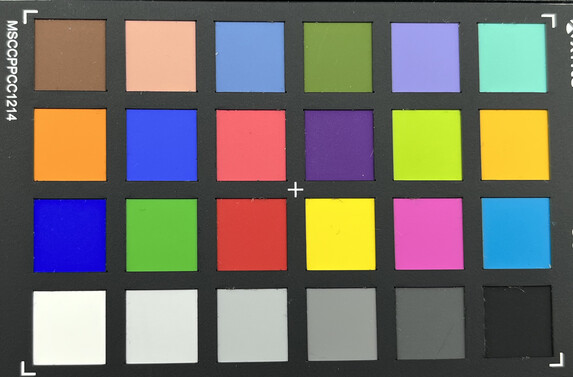
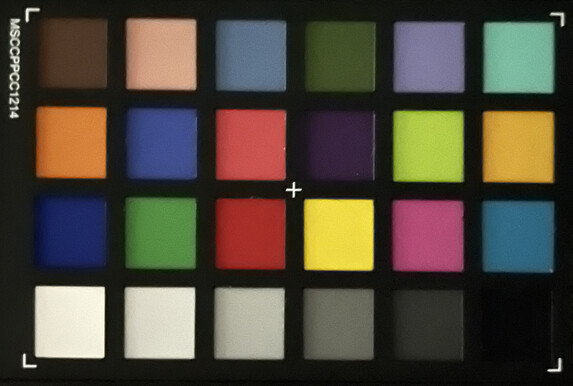
Accessories and Warranty – Still no Charger Included
The 13th generation of the iPhone once again features the MagSafe interface, a magnet on the back that can be used for charging or attaching the iPhone to a mount. Aside from MagSafe cases in numerous colors for $49 USD each, an external battery for longer battery life is also available for $99 USD. The MagSafe charger can be purchased for $39 USD, while the Duo Charger with MagSafe and Qi costs $129 USD. Speaking of which: A wired charger, which again, is not included, costs $19 USD.
Apple offers a standard 1-year limited warranty for customers in the US. The device can be sent in for repairs or repaired directly at a certified partner or Apple Store.
For non-warranty cases, an official price list is available: A new display costs $279 USD, for example. For a new battery, Apple demands $69 USD. Additionally, users can purchase Apple Care+, an extended warranty that covers damages within the first year and, if desired, theft. However, there is still a service fee.
Input Devices & Handling – FaceID for Authentication
Since the display's refresh rate remains fixed at 60 Hz, the user experience is ever so slightly less responsive compared to the iPhone Pro models. Regardless, the touchscreen of the Apple smartphone responds accurately and quickly to inputs. Meanwhile, the strong vibration motor conveys the feeling of an actual key press when tapping on the display.
Those hoping for a finger print sensor will be disappointed: Apple continues to rely on FaceID, a facial recognition technology that is assisted by a 3D camera on the front and regarded as relatively secure.
In our testing, we were able to unlock the smartphone quickly and reliably with FaceID, which was not fooled by pictures of our face. For FaceID to work, the smartphone has to be upright, since the feature does not work in landscape mode. Thanks to infrared light, the system works flawlessly in the dark.
Display – Even Brighter, but not Faster
Compared to last year's model, the resolution, size and aspect ratio of the iPhone 13's OLED display is identical. At up to 800 nits, the maximum brightness is slightly higher. In our measurements with a spectrophotometer, the Apple device even exceeds this value with 830.4 nits on average.
The illumination is very even and the display is HDR10 and Dolby Vision certified. Since the display is still limited to 60 Hz, users of the non-Pro models will not benefit from smoother scrolling.
| |||||||||||||||||||||||||
Brightness Distribution: 98 %
Center on Battery: 831 cd/m²
Contrast: ∞:1 (Black: 0 cd/m²)
ΔE ColorChecker Calman: 0.77 | ∀{0.5-29.43 Ø4.78}
ΔE Greyscale Calman: 1.2 | ∀{0.09-98 Ø5}
129% sRGB (Calman 2D)
Gamma: 2.209
CCT: 6501 K
| Apple iPhone 13 OLED, 2532x1170, 6.1" | Apple iPhone 12 OLED, 2532x1170, 6.1" | Samsung Galaxy S21 Dynamic AMOLED 2X, 2400x1080, 6.2" | OnePlus 9 AMOLED, 2400x1080, 6.6" | Xiaomi Mi 11 LED DotDisplay, 3200x1440, 6.8" | Sony Xperia 5 III OLED, 2520x1080, 6.1" | |
|---|---|---|---|---|---|---|
| Screen | -15% | -68% | 6% | -33% | -125% | |
| Brightness middle (cd/m²) | 831 | 642 -23% | 790 -5% | 731 -12% | 840 1% | 554 -33% |
| Brightness (cd/m²) | 830 | 639 -23% | 793 -4% | 739 -11% | 845 2% | 559 -33% |
| Brightness Distribution (%) | 98 | 97 -1% | 97 -1% | 96 -2% | 98 0% | 95 -3% |
| Black Level * (cd/m²) | ||||||
| Colorchecker dE 2000 * | 0.77 | 0.9 -17% | 2.2 -186% | 0.59 23% | 1.2 -56% | 2.22 -188% |
| Colorchecker dE 2000 max. * | 1.52 | 2.42 -59% | 4.2 -176% | 1.3 14% | 2.7 -78% | 5.94 -291% |
| Greyscale dE 2000 * | 1.2 | 0.8 33% | 1.6 -33% | 0.9 25% | 2 -67% | 3.6 -200% |
| Gamma | 2.209 100% | 2.188 101% | 2.13 103% | 2.243 98% | 2.26 97% | 2.193 100% |
| CCT | 6501 100% | 6404 101% | 6497 100% | 6573 99% | 6492 100% | 7000 93% |
* ... smaller is better
Screen Flickering / PWM (Pulse-Width Modulation)
| Screen flickering / PWM detected | 610 Hz | ||
The display backlight flickers at 610 Hz (worst case, e.g., utilizing PWM) . The frequency of 610 Hz is quite high, so most users sensitive to PWM should not notice any flickering. In comparison: 53 % of all tested devices do not use PWM to dim the display. If PWM was detected, an average of 8149 (minimum: 5 - maximum: 343500) Hz was measured. | |||
Apple's TrueTone technology continuously adjusts the screen's colors to the ambient lighting conditions, in order to preserve their fidelity. Since this of course alters the colors, however, our measuring device uncovers the true potential of the display with TrueTone disabled: With the colors being displayed with only minor deviations from their ideals, the display is well-suited to the evaluation of print colors.
At the lowest brightness setting, the display exhibits a flickering that is indicative of PWM being used to regulate the display's brightness. However, just slightly increasing the brightness makes the flickering disappear. Regardless, we recommend sensitive users to take a look at the display before buying.
Display Response Times
| ↔ Response Time Black to White | ||
|---|---|---|
| 6 ms ... rise ↗ and fall ↘ combined | ↗ 3 ms rise | |
| ↘ 3 ms fall | ||
| The screen shows very fast response rates in our tests and should be very well suited for fast-paced gaming. In comparison, all tested devices range from 0.1 (minimum) to 240 (maximum) ms. » 17 % of all devices are better. This means that the measured response time is better than the average of all tested devices (20.3 ms). | ||
| ↔ Response Time 50% Grey to 80% Grey | ||
| 9 ms ... rise ↗ and fall ↘ combined | ↗ 5 ms rise | |
| ↘ 4 ms fall | ||
| The screen shows fast response rates in our tests and should be suited for gaming. In comparison, all tested devices range from 0.165 (minimum) to 636 (maximum) ms. » 21 % of all devices are better. This means that the measured response time is better than the average of all tested devices (31.7 ms). | ||
Performance – Even More Power for the iPhone 13
While the latest Apple A15 Bionic comes with even more transistors, it still has six cores. The clock speed of the processor, which is based on the 5-nm process, making it comparable to other high-end SoCs, has been increased to up to 3230 MHz.
Since it is only about 10-20% faster than its predecessor, the Apple A14 Bionic, the difference will likely only become apparent in very demanding apps. That being said, the iPhone 13 is once again the clear winner in terms of high-end smartphone performance and sets the bar for other devices.
There are a few compromises when it comes to the GPU: Unlike the "Pro" models, the iPhone 13 only gets one graphics unit with four cores. Our offscreen benchmarks produce record-setting graphics performance results. It will be interesting to see how much of a lead the iPhone 13 Pro and Pro Max gain from their additional core.
| Antutu v9 - Total Score (sort by value) | |
| Apple iPhone 13 | |
| Sony Xperia 5 III | |
| Average Apple A15 Bionic (722973 - 832548, n=8) | |
| Average of class Smartphone (99654 - 2056989, n=32, last 2 years) | |
| AImark - Score v2.x (sort by value) | |
| Apple iPhone 13 | |
| Apple iPhone 12 | |
| Samsung Galaxy S21 | |
| OnePlus 9 | |
| Xiaomi Mi 11 | |
| Sony Xperia 5 III | |
| Average Apple A15 Bionic (104532 - 107460, n=5) | |
| Basemark GPU 1.2 | |
| Metal Medium Native (sort by value) | |
| Apple iPhone 13 | |
| Apple iPhone 12 | |
| Average Apple A15 Bionic (155.4 - 167.9, n=3) | |
| Average of class Smartphone (152.9 - 245, n=3, last 2 years) | |
| 1920x1080 Metal Medium Offscreen (sort by value) | |
| Apple iPhone 13 | |
| Apple iPhone 12 | |
| Average Apple A15 Bionic (203 - 220, n=3) | |
| Average of class Smartphone (251 - 319, n=3, last 2 years) | |
So far, the iPhone 13 is unmatched when it comes to web browsing: In our benchmarks, no other device comes close. During daily use, this results in pictures that are already loaded when scrolling through web pages and barely any delays from loading content. Even demanding HTML 5 pages are loaded very quickly.
| Jetstream 2 - 2.0 Total Score | |
| Average Apple A15 Bionic (173.5 - 189.9, n=8) | |
| Apple iPhone 13 (Safari 15) | |
| Apple iPhone 12 (Safari 14) | |
| Average of class Smartphone (23.8 - 387, n=153, last 2 years) | |
| Sony Xperia 5 III (Chrome93) | |
| Xiaomi Mi 11 (Chrome 88) | |
| Samsung Galaxy S21 (Chrome 88.0.4324.152) | |
| OnePlus 9 (MS Edge) | |
| JetStream 1.1 - Total Score | |
| Average Apple A15 Bionic (383 - 414, n=6) | |
| Apple iPhone 13 (Safari 15) | |
| Apple iPhone 12 (Safari 14) | |
| Sony Xperia 5 III (Chrome93) | |
| Xiaomi Mi 11 (Chrome 88) | |
| OnePlus 9 (MS Edge) | |
| Samsung Galaxy S21 (Chrome 88.0.4324.152) | |
| Speedometer 2.0 - Result 2.0 | |
| Average Apple A15 Bionic (228 - 347, n=8) | |
| Apple iPhone 13 (Safari 15) | |
| Average of class Smartphone (15.2 - 643, n=129, last 2 years) | |
| Apple iPhone 12 (Safari 14) | |
| Samsung Galaxy S21 (Chrome 88.0.4324.152) | |
| Xiaomi Mi 11 (Chrome 88) | |
| OnePlus 9 (MS Edge) | |
| WebXPRT 3 - Overall | |
| Average Apple A15 Bionic (219 - 279, n=8) | |
| Apple iPhone 13 (Safari 15) | |
| Apple iPhone 12 (Safari 14) | |
| Average of class Smartphone (38 - 380, n=38, last 2 years) | |
| Xiaomi Mi 11 (Chrome 88) | |
| OnePlus 9 (MS Edge) | |
| Samsung Galaxy S21 (Chrome 88.0.4324.152) | |
| Octane V2 - Total Score | |
| Average Apple A15 Bionic (57143 - 65969, n=8) | |
| Apple iPhone 13 (Safari 15) | |
| Apple iPhone 12 (Safari 14) | |
| Average of class Smartphone (2228 - 121337, n=200, last 2 years) | |
| Sony Xperia 5 III (Chrome93) | |
| Xiaomi Mi 11 (Chrome 88) | |
| Samsung Galaxy S21 (Chrome 88.0.4324.152) | |
| OnePlus 9 (Chrome89) | |
| Mozilla Kraken 1.1 - Total | |
| Samsung Galaxy S21 (Chrome 88.0.4324.152) | |
| Xiaomi Mi 11 (Chrome 88) | |
| OnePlus 9 (Chrome89) | |
| Average of class Smartphone (257 - 28190, n=155, last 2 years) | |
| Sony Xperia 5 III (Chrome93) | |
| Apple iPhone 12 (Safari 14) | |
| Average Apple A15 Bionic (414 - 507, n=8) | |
| Apple iPhone 13 (Safari 15) | |
* ... smaller is better
Gaming – iPhone Gaming at 60 FPS?
Unfortunately, the app of our partner GameBench currently is not yet fully compatible with iOS 15. Thus, we cannot provide detailed FPS measurements.
However, judging from our first impressions and experience with the previous model, gaming at 60 FPS should not be a challenge, provided the title supports it. We will of course publish our results in this review, as soon as the GameBench app is updated.
The controls are not an issue, either: The accurate touchscreen and gyroscope work flawlessly. Most games have also been updated to not hide any control elements behind the notch or rounded off corners of the display.
Emissions – iPhone 13 with Higher Temperatures
Temperature
Under load, the iPhone 13 becomes noticeably warm with up to 43.6 °C (~110.5 °F). Although this is not a problem at room temperature, the case's temperature will likely increase further under warmer conditions, which may become uncomfortable.
As the 3DMark stress tests show, this also adversely affects the long-term performance: After just a few loops, the performance already drops by 10-15%. Although this is clearly visible in the graph, this should only become apparent in very demanding apps due to the high overall performance level of the Apple A15. Still, the iPhone 12 remained significantly cooler and did not suffer from throttling.
3DMark Wild Life Stresstest
(±) The maximum temperature on the upper side is 41.7 °C / 107 F, compared to the average of 35.2 °C / 95 F, ranging from 21.9 to 247 °C for the class Smartphone.
(±) The bottom heats up to a maximum of 43.6 °C / 110 F, compared to the average of 34 °C / 93 F
(+) In idle usage, the average temperature for the upper side is 25 °C / 77 F, compared to the device average of 32.9 °C / 91 F.
Speakers
Like its predecessor, the iPhone 13 comes with the familiar speaker setup that includes a speaker near the bottom edge and the earpiece as a hybrid speaker for a stereo effect. The iPhone 13 has a slightly higher maximum volume than the iPhone 12 with slightly more balanced sound overall according to our measurements. Whether this is noticeable in practice remains in question.
At maximum volume, the sound is very treble-heavy and, when playing speech and music simultaneously, turns into an undiscernible mess. However, the iPhone 13 appears to introduce this effect at a significantly higher volume level than the iPhone 12, which is a clear improvement.
Lastly, a Lightning-to-3.5-mm adapter is required to use analog headphones. Alternatively, Bluetooth 5.0 is also available. For Bluetooth headphones, users should ensure Apple's AAC codec is supported for an optimal audio experience. Qualcomm's aptX codecs remain unsupported.
Apple iPhone 13 audio analysis
(+) | speakers can play relatively loud (83.2 dB)
Bass 100 - 315 Hz
(-) | nearly no bass - on average 21.6% lower than median
(±) | linearity of bass is average (9.2% delta to prev. frequency)
Mids 400 - 2000 Hz
(+) | balanced mids - only 4% away from median
(+) | mids are linear (4.7% delta to prev. frequency)
Highs 2 - 16 kHz
(+) | balanced highs - only 3.6% away from median
(+) | highs are linear (6.3% delta to prev. frequency)
Overall 100 - 16.000 Hz
(±) | linearity of overall sound is average (16.6% difference to median)
Compared to same class
» 7% of all tested devices in this class were better, 5% similar, 87% worse
» The best had a delta of 11%, average was 35%, worst was 134%
Compared to all devices tested
» 28% of all tested devices were better, 6% similar, 67% worse
» The best had a delta of 4%, average was 24%, worst was 134%
Apple iPhone 12 audio analysis
(±) | speaker loudness is average but good (81.1 dB)
Bass 100 - 315 Hz
(-) | nearly no bass - on average 62.2% lower than median
(+) | bass is linear (0% delta to prev. frequency)
Mids 400 - 2000 Hz
(-) | nearly no mids - on average 62.2% lower than median
(+) | mids are linear (0% delta to prev. frequency)
Highs 2 - 16 kHz
(-) | nearly no highs - on average 62.2% lower than median
(+) | highs are linear (0% delta to prev. frequency)
Overall 100 - 16.000 Hz
(-) | overall sound is not linear (123.1% difference to median)
Compared to same class
» 92% of all tested devices in this class were better, 7% similar, 1% worse
» The best had a delta of 11%, average was 35%, worst was 134%
Compared to all devices tested
» 97% of all tested devices were better, 2% similar, 0% worse
» The best had a delta of 4%, average was 24%, worst was 134%
Battery Life – Lower Consumption
Energy Consumption
The A15 Bionic is supposed to be more energy efficient according to Apple and our consumption measurements clearly confirm this: There are significant differences compared to the iPhone 12's A14 Bionic in every scenario. Similarly, Apple's processor is more economical than the Android competition, which mostly contains the Qualcomm Snapdragon 888.
| Off / Standby | |
| Idle | |
| Load |
|
Key:
min: | |
| Apple iPhone 13 3240 mAh | Apple iPhone 12 2815 mAh | Samsung Galaxy S21 4000 mAh | OnePlus 9 4500 mAh | Xiaomi Mi 11 4600 mAh | Sony Xperia 5 III 4500 mAh | Average Apple A15 Bionic | Average of class Smartphone | |
|---|---|---|---|---|---|---|---|---|
| Power Consumption | -39% | -51% | -58% | -78% | -113% | -16% | -42% | |
| Idle Minimum * (Watt) | 0.6 | 0.9 -50% | 1.1 -83% | 0.9 -50% | 1.57 -162% | 1.8 -200% | 0.66 ? -10% | 0.849 ? -42% |
| Idle Average * (Watt) | 1 | 1.5 -50% | 1.61 -61% | 1.7 -70% | 1.92 -92% | 2.6 -160% | 1.303 ? -30% | 1.43 ? -43% |
| Idle Maximum * (Watt) | 1.3 | 1.8 -38% | 1.78 -37% | 2.7 -108% | 1.94 -49% | 3.1 -138% | 1.748 ? -34% | 1.612 ? -24% |
| Load Average * (Watt) | 4.5 | 5.5 -22% | 6.47 -44% | 5.4 -20% | 6.32 -40% | 5.3 -18% | 4.85 ? -8% | 7.08 ? -57% |
| Load Maximum * (Watt) | 7.8 | 10.4 -33% | 10.12 -30% | 11.1 -42% | 11.65 -49% | 11.5 -47% | 7.77 ? -0% | 11.2 ? -44% |
* ... smaller is better
Consumption: Geekbench (150 nits)
Consumption: GFXBench (150 nits)
Battery Life
The battery size of the iPhone has increased noticeably with the 13th generation: The capacity is now 3240 mAh. Although this is still fairly low compared to Android smartphones, size does not matter as much as the technology in this case and the Californians are very good at the latter. In the runtime department, no other smartphone can hold a candle to the iPhone 13 and the Samsung Galaxy S21 notably only lasts half as long in our Wi-Fi test.
With the latest iPhone, we were able to browse the web for more than 17 hours. In practice, users will not have to worry about forgetting their charger: With normal use, the iPhone 13's battery should last for multiple days.
While a charger is not included in the scope of delivery, previously purchased chargers can be used. Apple's iPhone 13 can be charged at up to 20 watts. At this rate, the battery can be charged from 0 to 100% in just above one hour. Alternatively, the iPhone can be charged via the MagSafe interface on the back at up to 15 watts or via the wireless Qi standard at 7.5 watts. In these cases, the charging times will increase accordingly.
| Apple iPhone 13 3240 mAh | Apple iPhone 12 2815 mAh | Samsung Galaxy S21 4000 mAh | OnePlus 9 4500 mAh | Xiaomi Mi 11 4600 mAh | Sony Xperia 5 III 4500 mAh | |
|---|---|---|---|---|---|---|
| Battery runtime | -6% | -29% | -31% | -39% | -29% | |
| Reader / Idle (h) | 45.6 | 43.4 -5% | 28.6 -37% | 27.1 -41% | 19.1 -58% | |
| H.264 (h) | 20.4 | 18.9 -7% | 15.7 -23% | 15.5 -24% | 16.2 -21% | |
| WiFi v1.3 (h) | 17 | 15.8 -7% | 9.1 -46% | 14.2 -16% | 8.8 -48% | 12.1 -29% |
| Load (h) | 5 | 4.7 -6% | 4.5 -10% | 2.8 -44% | 3.6 -28% |
Pros
Cons
Verdict – Familiar and New
This year's iPhone comes with numerous welcome upgrades: Better battery life, a brighter screen, slightly better speakers, a slightly smaller notch. Of course, there are also new iOS features as well as a new, more powerful CPU.
The design of the case still follows a sleek and fairly rectangular approach, while offering a great build quality, an IP certification and a robust display to meet the current standards. There is also fast Wi-Fi and support for all current mobile communications standards.
Compared to the previous model, the iPhone 13's case temperatures are not quite as low, which adversely affects the long-term performance. Furthermore, users will have to contend with a comparatively slower quick charging standard and a maximum display refresh rate of 60 Hz. The 120-Hz Pro Motion feature is exclusive to the "Pro" models.
The iPhone 13's main advantages are its fast performance and bright display.
The iPhone 13 is still a great choice regardless, since it includes more storage than its predecessor for the same price as well as sensible upgrades, enabling it to better compete with current alternatives.
Although the Samsung Galaxy S21 is slightly more flexible when it comes to pictures thanks to its third camera, its battery life is significantly shorter. Similarly, the OnePlus 9 is a lot cheaper, which is apparent from its chassis, among other things. Last year's iPhone 12 can be found for a significantly cheaper price and be a compelling alternative, since there are only a few, relatively minor differences.
Price and Availability
The Apple iPhone 13 is available starting from $799 USD directly from the manufacturer. Alternatively, various online retailers such as BestBuy, Walmart, or Amazon also list the Apple smartphone.
Apple iPhone 13
- 08/30/2022 v7 (old)
Florian Schmitt




